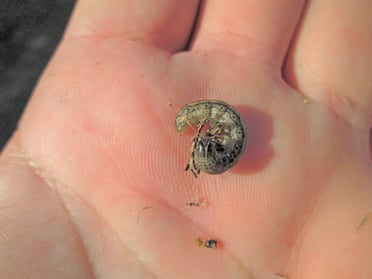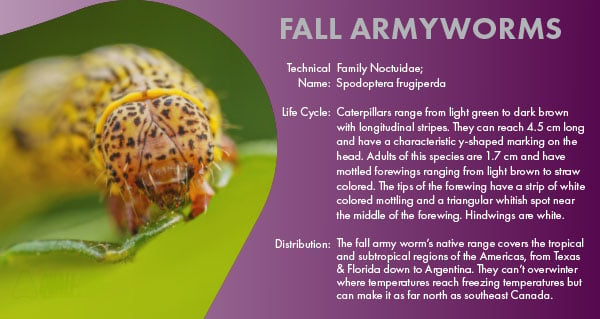Take A Closer Look with Danny McDonald, Ph.D.
“Armyworm” refers to several species of caterpillars in the family Noctuidae that can reach devastating population densities that might remind you of an “army”. Many of these species are pests is the summer. However, the Fall Armyworm (Spodoptera frugiperda), as you have probably guessed by now, is named so for being in the destructive larvae stage during fall months.
Armyworms feed on grass and many crops, making them a major pest of lawns, golf courses, sod farms, pastures, and athletic fields. They feed on a variety of grass species including bermudagrass, ryegrass, fescue, and bluegrass. Due to large populations and their voracious appetites, the damage can be extensive (think football fields), in just a few days. Although the moth stage is nocturnal, the caterpillars feed throughout the day with peak foraging in early morning and late afternoon.
Mild winters that fail to kill the overwintering populations often lead to breakout years the following autumn. Fall Armyworms have several generations per year, but large population densities occur in late summer through fall. This species can typically only survive winters in Texas and Florida and, therefore are mostly a pest in the southern U.S., but can make it as far north as Canada.
Birds and wasps are major enemies of fall armyworms. In fact, birds foraging on turfgrass fields can serve as an indicator of fall armyworm infestations. Fall armyworm caterpillars have even been known to cannibalize each other when the opportunity arises.

Danny McDonald, Ph.D. Tech Services Manager, Animal Health
